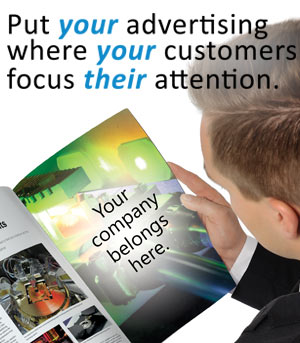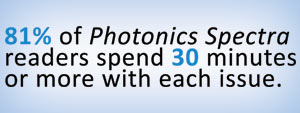 Find Marketing Power, Value with LinkedIn
Find Marketing Power, Value with LinkedIn
Justine Murphy, Senior Editor, [email protected]
Social media is a principal communications tool, connecting billions of people worldwide across various platforms. To remain powerful, effective, and beneficial within such a large assembly, social media accounts must be used regularly, strategically, and methodically.
Some platforms, such as Facebook and Twitter, tend to be more casually social with their connections and content, while others such as LinkedIn emphasize business and industry.
LinkedIn has become effective for business-focused subject matter and messages. There are currently about 500 million LinkedIn members — just over 60 million of those are senior-level influencers and 40 million are decision-makers. Nearly 60 percent of marketers generate leads via this platform. A survey of B2B companies by Oktopost, a social media marketing firm, found that just over 80 percent of sales leads are generated through LinkedIn, while Twitter and Facebook generate just 13 percent and 7 percent, respectively, of business and sales leads.
“As the number of social media users worldwide continues to grow, companies increasingly will find that social networking influences their revenue and sales,” said Kristen Herhold, content developer and marketer at Clutch, a B2B ratings and reviews firm.
|
|
|
|
|
|
Upcoming Magazine Features
|
|
| |
|
Trying to get new customers by targeting your product or service to the photonics industry? Take a peek at what our members will be reading about.
JULY Photonics Spectra
• Integrated Photonics
Contributor: IMEC
Silicon photonic interposers for 400 Gb/s and beyond optical interconnects. Due to the continuing growth in social networking, cloud computing, and big data applications, the demand for data communication in data centers is projected to grow exponentially in the next few years. This article discusses several implementations for optical links at 400 Gb/s and beyond in silicon photonics technology, in addition to challenges with electrical and optical packaging.
 • Photovoltaics
• Photovoltaics
Contributor: Guillaume Gomard, Institute of Microstructure Technology & Light Technology Institute, Karlsruhe Institute of Technology
Many photonic designs have been proposed to assist sunlight absorption in thin-film photovoltaics, spanning from commercially available, randomly textured substrates to periodic patterns tested in lab-scale demonstrators. Recently, disordered light-trapping structures have attracted significant interest, as their optical properties can be well controlled and fabricated over large areas using self-assembly techniques.
• Extreme UV for Lithography
Contributor: Cymer
The semiconductor industry is moving to the next phase of extreme UV (EUV) industrialization to support high-volume manufacturing at the sub-10-nm LOGIC and DRAM nodes in 2018/2019. Progress is being made with regard to productivity, and infrastructure developments are enabling cost-effective shrink. Improvements to source architecture are facilitating an increase in EUV power.
• Flexible LEDs
Contributor: KAIST
In this article, the author covers ways in which organic LEDs (OLEDs) — with their flexible and light characteristics — can be implemented in clothing form.
• Coatings
Contributor: DSI
A review of coating technology will be discussed in this article, and how it can overcome some of the limitations of evaporative and sputtered coatings. Emerging and existing applications for this technology also will be covered.
JULY Industrial Photonics
• Machine Vision Software
Contributor: MVTech
This article provides an overview on the status quo of modern machine vision software and the benefits of its capabilities for users, applications, and processes. It serves as a practical guide for choosing the best machine vision software.
• Lasers for Micromachining
Contributor: Hank Hogan, contributing editor
Smaller device components and tighter tolerances demand finer and finer features, prompting an increasing need for micromachining. For lasers, this translates into shorter pulse widths — these have to be at the right wavelengths so the light interacts properly with the material being machined, which can be a challenge for some polymers and metals. Micromachining trends and their impact on laser development (and vice versa) also are emerging.
• Spectroscopy for Food Monitoring
Contributor: Impact Vision
Until recently, hyperspectral imaging could not be applied in food processing facilities because of large volumes of data generated and the impact of incumbent classification models. Now it can be used non-invasively and in real time for in-line applications such as beef pH, color and tenderness classification, detection of foreign objects on surfaces, and classification of freshness and ripeness.
 • Vision Systems for Measurement
• Vision Systems for Measurement
Contributor: Edmund Optics
Calibration, pointing accuracy, and repeatability are critical to the success of vision systems for measurement. This is especially true in precise AI applications, where single-pixel measurements are needed to help machines make intelligent decisions. This article details the technical challenges that shrinking pixel sizes have caused by increasing the difficulty of calibrating imaging systems, maintaining pointing accuracy, and obtaining repeatable measurements.
JULY/AUGUST BioPhotonics
• Nanoscale Imaging
Contributor: Double Helix
Superresolution imaging in the third dimension enables scientists to obtain a complete picture of sub-cellular structures with an unprecedented combination of depth-precision at the nanoscale. A new technology — using a class of rotating 3D point spread functions (PSF) — integrates depth information with superresolution level resolution, providing researchers the ability to visualize and measure with unprecedented levels of precision and depth.
• Noninvasive Diagnosis of Infectious Diseases
Contributor: Marie Freebody, contributing editor
Photonic technologies bring the promise of inexpensive, rapid, noninvasive, point-of-care testing for infectious disease that better informs treatment decisions, allowing the physician to target the right drug for the right bug.
• Computational Imaging Optics
Contributor: Laura Waller, UC Berkeley
A new camera technology replaces bulky microscope optics with a single thin, randomly refracting mask — called a diffuser — placed a few millimeters from a standard imaging sensor. This article focuses on using this technology to develop compact (subcentimeter scale) lenseless fluorescence microscopes that will be able to monitor the temporal dynamics of thousands of neurons in a freely moving animal.
• Two-Photon Microscopy
Contributor: Coherent Inc.
This article discusses two-photon microscopy for the study of the role of blood and lymphatic vessels in tumors, arteriosclerosis, and strokes. The research looks at the growth of the vessels and probes the role of genes in controlling the functionality and development. Coherent's Discovery laser allows the researchers to tune between wavelengths at high power to perform deep imaging.
Contact your Account Manager to reach these customers.
|
|
|
|
Special Marketing Opportunities
|
|
| |
|
Upcoming Webinars: Put your expertise in the spotlight and draw qualified leads with a Photonics Media webinar.
• Holography for Display: From AR to HUD to 3D
Presenter: Pierre-Alexandre Blanche, research professor of optics at the University of Arizona's College of Optical Sciences — June 12, 1 p.m. EDT
• Optics and Astronomy
Presenter: Suresh Sivanandam, Ph.D., assistant professor at the Dunlap Institute for Astronomy and Astrophysics at the University of Toronto — June 20, 1 p.m. EDT
Contact your Account Manager to reach these new buyers.
|
|
|
Visit the Photonics Media booth at upcoming industry events to get the latest issues of our magazines and start or renew your FREE subscriptions. Are you exhibiting at these events? Make the most of your trade show investment with our preshow marketing opportunities!
• CLEO 2018, San Jose, Calif.: May 15-17, Booth 2326; Preview books available in our online bookstore, and get a discount code for your next order, charge your mobile device at our charging kiosk, and ask how you can get a free T-shirt! Also enter to win a DESTEK V4 virtual reality headset and a $50 Amazon gift card.
• OPTATEC 2018, Frankfurt, Germany: May 15-17, Booth A53; Preview some of the books available in our online book store, pick up a bookstore postcard with a discount code for your next order, and ask how you can get a free t-shirt!
The latest issues of Photonics Media publications will also be available at these May trade shows:
AutoSens USA (Photonics Spectra, Photonics Showcase)
SID Display Week (Photonics Spectra)
|
|
|
Your monthly marketing and creative tips from our experienced editors and skilled designers.
 A Call to Action
A Call to Action
Some of the most effective banner ads for click-through traffic have a call to action to compel engagement with the ad. Try using descriptive yet action-oriented verbiage and stay away from generic standbys such as “click here to learn more.”
Make sure your call to action stands out in a visually appealing way — distinctive button colors and bold fonts are among options. If possible, write in the first person. Studies have shown that a call to action written in the first-person will have a much better click-through rate than one using second-person speak.
Cultivate a sense of urgency with your copy. For example, if there is a deadline or a promotion ending soon, use that. And keep in mind how the user will read the information when placing your call to action buttons. These are typically placed on the bottom or lower right of the ad and should outperform other placement options.
Don't be afraid of white space either. Sometimes less is more, and a call to action button with a healthy amount of white space around it can make this very important part of your ad stand out.
Visit Photonics.com/DesignLab to see how we can help you stand head and shoulders above the competition.
|
|
|
 |
For more marketing insights, visit the Photonics Media Advertising Hub — your guide to a successful marketing program in the photonics industry. You'll find all the tools you need to build your brand, drive traffic to your website, generate leads and grow sales.
|
|
|